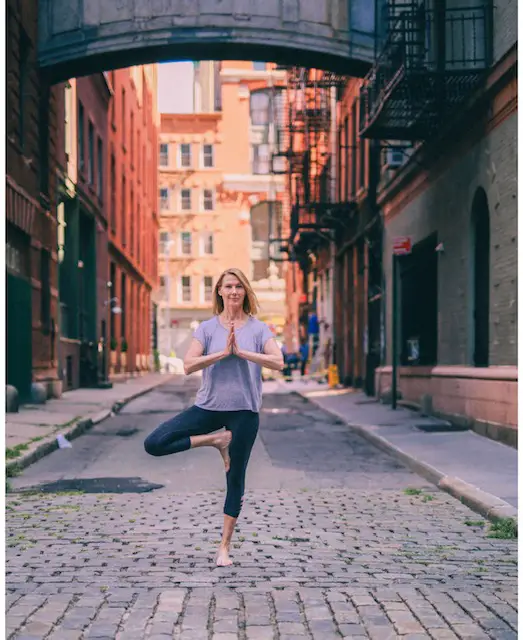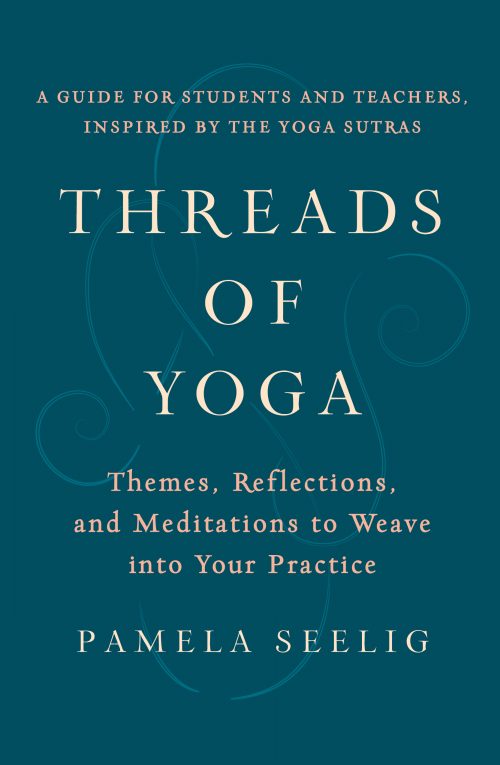The physical postures of yoga, or asana, are typically the “way in” to the practice of yoga. The many benefits of moving the body beyond the typical range of motion keep practitioners returning to their mats.
At first, these benefits may be enough. But over time, a modern-day yogi may wish to learn more or wonder, “What’s next?”
Enter yoga philosophy.
Delving more deeply into the ancient wisdom can enrich and enliven a yoga practice as the meaning behind the movement emerges. But where to begin?
The Yoga Sutras, a text written about 2,500 years ago by the revered Indian sage Patanjali, can provide a solid foundation for the study of yogic wisdom. In the Sutras, Patanjali tells us what yoga is, why we do it, the obstacles we face, remedies for those obstacles, and the ultimate stages of yoga or self-realization.
He codifies the vast science of yoga into eight limbs:
- Yamas (ethical restraints)
- Niyamas (ethical observances)
- Asana (postures)
- Pranayama (breathwork)
- Pratyahara (sense withdrawal)
- Dharana (concentration)
- Dhyana (meditation)
- Samadhi (absorption)
The limbs are often not approached chronologically. The third limb, postures, or the seventh limb, meditation, may be a student’s first contact with the yogic path. The first two limbs, the yamas and niyamas, are ethical precepts and can be overlooked as they appear too obvious or simplistic. However, they can serve as an essential starting point and foundation when deepening a yoga practice.

Since there are five yamas and five niyamas, they have been dubbed the yoga Ten Commandments, but they are much more than a list of dos and don’ts. There is no outside judge or punishment if our thoughts or actions go awry. Instead, these first two limbs help us reflect and cultivate qualities that align with our true nature.
The five yamas are:
- Ahimsa; nonviolence
- Satya; honesty
- Asteya; nonstealing
- Brahmacharya; continence or moderation
- Aparigraha; non-greed, non-hoarding
The five niyamas are:
- Saucha; cleanliness, purity
- Santosha; contentment
- Tapas; heat, spiritual austerities
- Svadhyaya; self-study or study of spiritual texts
- Ishvara Pranidhana; surrender to a higher power
As with all of yoga, intellectual knowledge of the yamas and niyamas is not enough. One must contemplate and, through practice, incorporate the wisdom within their own mind/body.
One way to do this is to focus on one yama or niyama for some time, such as a day, a week, or a month, and experience the teaching in one’s own life. For instance, a practitioner may start with the first yama, ahimsa, nonviolence, and dedicate one week to reflecting and then working with this concept.
We can begin by first observing our thoughts. We may discover that our inner narrator or self-talk is surprisingly harsh, aggressive, or even bullying. This voice can become conspicuous when struggling with a pose during asana practice or any time we take a risk or try something new.
The inner narrator can produce worst-case scenarios to dissuade any progress or shift toward new goals. One of the great gifts of yoga is bringing awareness to such thoughts and thereby reducing their power.

A practice such as imagining that our internal voice is leading a dear friend in a yoga class can help to soften the inner narrator. When treating ourselves as we would a friend, the internal words and tone will not be harsh and instead offer encouragement and kindness.
We can also practice ahimsa while meditating to cultivate peacefulness or nonviolence for ourselves and others. For example, utilizing a mantra such as “may there be peace in my heart” on the inhale and “may there be peace in the world” on the exhale can help us to establish a peaceful sensation within our body.
We can also spotlight ahimsa in our life when acknowledging the violence in the world. Noticing what draws our attention and moves us to take conscious action is practicing ahimsa.
We all experience violence in our own lives in varying degrees. Experiencing or witnessing violence can drive us to become activists, donate time or money, or perhaps the best response is to rest and care for ourselves.
Whether through meditation, supporting a cause, or self-care, we can practice ahimsa in our everyday lives. This is yoga.
After focusing on ahimsa for some time, we can then move on to the second yama; satya, honesty. To cultivate satya, we may choose to observe our thoughts and notice when we are not one hundred percent honest with ourselves or others and begin to correct this imbalance. There are myriad ways to practice and learn from each of the yamas and niyamas. While they may at first appear to be clear-cut, each has surprising layers of meaning.
The first two limbs of the eight-limbed path reveal the true motivation or intention behind our behavior and actions. Establishing ourselves in the wisdom of the yamas and niyamas can illuminate and bring more balance, peace, and joy into our lives and the world. When we integrate the yamas and niyamas, we move toward alignment with our true nature. This is the path of yoga, the way back to who we are.
The Giveaway
This post was written by the author of Threads of Yoga — read more below — and we are happy to share with you TWO copies of the book. (Thank you, Pamela!)
How do you join? Simply follow the instructions below. The giveaway runs from today through October 5. US addresses only, please. Tweet every day to have more entries!
a Rafflecopter giveaway
Pamela Seelig is a yoga teacher and the author of Threads of Yoga: Themes, Reflections, and Meditations to Weave into Your Practice. She began her yoga and meditation journey in 1991 when an illness interrupted her Wall Street career. She completed her teacher training in 2006 at Integral Yoga Institute in New York. Pamela considers Swami Satchidananda, the founder of Integral, as her primary teacher (root guru), but she has trained with many of the top yoga luminaries in the world today. Pamela is a fervent student of yoga and continues to deepen and expand her yogic knowledge and understanding. Along with Hatha yoga, Pamela also studies Patanjali’s Yoga Sutras and is a certified Raja Yoga instructor.



